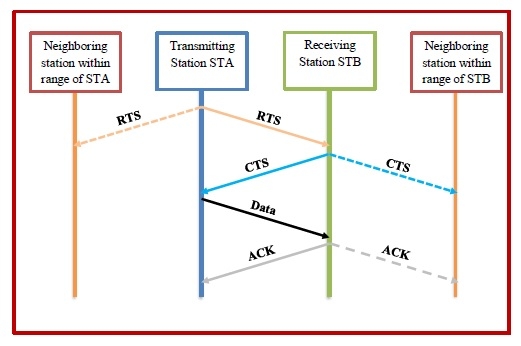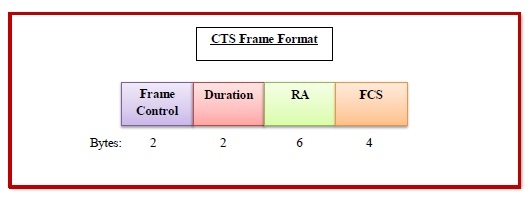
 Data Structure
Data Structure Networking
Networking RDBMS
RDBMS Operating System
Operating System Java
Java MS Excel
MS Excel iOS
iOS HTML
HTML CSS
CSS Android
Android Python
Python C Programming
C Programming C++
C++ C#
C# MongoDB
MongoDB MySQL
MySQL Javascript
Javascript PHP
PHP
- Selected Reading
- UPSC IAS Exams Notes
- Developer's Best Practices
- Questions and Answers
- Effective Resume Writing
- HR Interview Questions
- Computer Glossary
- Who is Who
Clear To Send (RTS)\\n
Clear to Send (CTS) is a control frame employed in the medium access control (MAC) layer protocol IEEE 802.11 RTS/CTS. The protocol uses the concept of Multiple Access with Collision Avoidance (MACA) in wireless networks. The RTS/CTS (Request to Send / Clear to Send) mechanism aims to reduce frame collisions introduced by the hidden terminal problem. CTS frame is sent by the receiver after it gets the RTS frame prior to receiving of the actual data frame.
Working Principle of MACA implementing CTS
The MACA protocol works with the condition that the communicating stations are synchronized and frame sizes and data speed are the same.
Let us consider that a transmitting station STA has data frame to send to a receiving station STB. The operation works as follows -
Station STA sends a RTS frame to the receiving station.
On receiving the RTS, station STB replies by sending a CTS frame.
On receipt of CTS frame, station STA begins transmitting its data frame.
After successful receipt of the data frame, station STB sends an ACK frame (acknowledgement frame).
The sequence is illustrated as follows -

Frame Format of CTS frame
There are four fields in a CTS frame, namely -
Frame Control: This is a 2 – bytes control field.
Duration: It is a 2 – bytes field that specifies the transmission time required by the data frame.
RA (Receiver Address): It is a 6 – bytes address field.
FCS (Frame Check Sequence): It is a 4 – bytes sequence for error detection. Generally cyclic redundancy code (CRC) is used.


